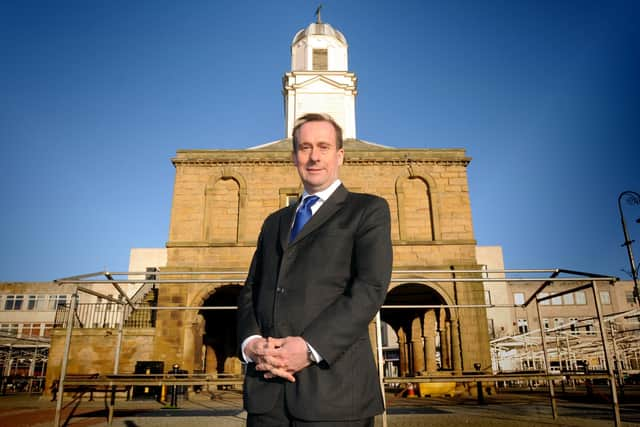Huge new carbon capture plant on Humberside 'essential' to Government's net zero by 2050 pledge
As part of a scheme called Humber 2030, energy firms are aiming to cut emissions from the UK’s largest industrial cluster by 80 per cent and create tens of thousands of jobs.
The UK is heavily reliant on the Humber for its energy needs, as around 20 per cent of the country’s electricity is generated there and it is also home to major gas terminals and oil and coal refineries.
Advertisement
Hide AdAdvertisement
Hide AdHowever, it emits more carbon dioxide (CO2) than any other industrial cluster in the country.


Energy Efficiency Minister Lord Martin Callanan visited the Port of Immingham on Friday and was told investors are prepared to pump £15bn into decarbonisation projects if they receive government backing.
Business leaders on the Humber Energy Board have set out plans to deliver several hydrogen production plants and carbon capture and storage facilities, including one at Drax Power Station in Selby, which has been described as “the world’s largest”.
The company said it plans to invest £2bn in the facility and it could remove eight metric tonnes of CO2 from the atmosphere each year by 2030, and support around 10,000 jobs.
Advertisement
Hide AdAdvertisement
Hide AdNone of the projects which are part of Humber 2030 were selected for investment as part of the Government’s Track One scheme in March.
But Richard Gwilliam, the chairman of the Humber Energy Board, said decarbonising the industrial cluster should be seen as “a strategic national priority”.
“The bottom line is with the Humber that we will not meet net zero in the UK unless we decarbonize this region,” he said.
"And it is critical for the long term preservation of jobs in traditional forms of industry that this region relies upon.”
Advertisement
Hide AdAdvertisement
Hide AdHe said there is £15bn of private sector investment “on the table” but some firms are reluctant to invest in a “very nascent” market that is not backed by the government.
“The thing with carbon capture and storage is that it requires, like any form of new technology such as wind or solar, some degree of support to get that technology up and running,” he said.
“This is just a stimulus to develop a market that has long-term longevity.”
Mr Gwilliam said he is confident Humber 2030 will receive government investment in one of the upcoming funding announcements.
Advertisement
Hide AdAdvertisement
Hide Ad“I’m optimistic that we will be able to decarbonize this region using this technology in the near term,” he added.
The Government has set a target to capture between 20m to 30m tonnes of CO2 a year by 2030, has already promised billions of pounds of funding for Harbour Energy’s Viking project in the Humber and the Acorn project in Scotland, as well as projects in Teesside and the North West.
As part of the scheme proposed in the Humber, Equinor is looking to build a hydrogen production plant with carbon capture at Saltend Chemicals Park, claiming it would reduce the site’s CO2 emissions by a third as it would take nearly one million tonnes out of the atmosphere each year.
As part of another project, the Norwegian Energy firm is working with SSE Thermal on plans to build a 910MW power station in North Lincolnshire, fitted with carbon capture technology.
There are also plans to use new carbon capture technologies to remove 3.8 metric tonnes of CO2 from the Immingham industrial area every year by around 2027, as part of a project known as Humber Zero.